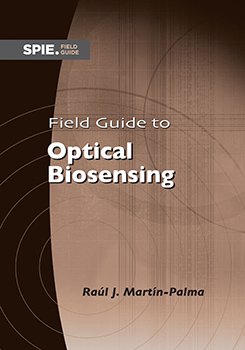|
|
Introduction to the SeriesIn 2004, SPIE launched a new book series under the editorship of Prof. John Greivenkamp, the SPIE Field Guides, focused on SPIE’s core areas of Optics and Photonics. The idea of these Field Guides is to give concise presentations of the key subtopics of a subject area or discipline, typically covering each subtopic on a single page, using the figures, equations, and brief explanations that summarize the key concepts. The aim is to give readers a handy desk or portable reference that provides basic, essential information about principles, techniques, or phenomena, including definitions and descriptions, key equations, illustrations, application examples, design considerations, and additional resources. The series has grown to an extensive collection that covers a range of topics from broad fundamental ones to more specialized areas. Community response to the SPIE Field Guides has been exceptional. The concise and easy-to-use format has made these small-format, spiral-bound books essential references for students and researchers. Many readers tell us that they take their favorite one with them wherever they go. The popularity of the series led to its expansion into areas of general physics in 2019, with the launch of Field Guides to General Physics. The core series continues as the SPIE Field Guides to Optical Sciences and Technologies. The concept of these books is a format-intensive presentation based on figures and equations supplemented by concise explanations. In most cases, this modular approach places a single topic on a page, and provides full coverage of that topic on that page. Highlights, insights, and rules of thumb are displayed in sidebars to the main text. The appendices at the end of each Field Guide provide additional information such as related material outside the main scope of the volume, key mathematical relationships, and alternative methods. While complete in their coverage, the concise presentation may be best as a supplement to traditional texts for those new to the field. The SPIE Field Guides are intended to be living documents. The modular page-based presentation format allows them to be updated and expanded. In the future, we will look to expand the use of interactive electronic resources to supplement the printed material. We are interested in your suggestions for new topics as well as what material should be added to an individual volume to make these books more useful to you. Please contact us at fieldguides@SPIE.org. J. Scott Tyo, Series Editor The University of New South Wales Canberra, Australia Related Titles from SPIE PressKeep information at your fingertips with these other SPIE Field Guides:
Other related titles:
To my parents, Teresa and Eugenio Table of ContentsPrefaceThe main aim of this Field Guide is to provide a concise, self-contained, but rigorous overview of the different processes, techniques, and configurations used to develop optical biosensors. Several representative applications in many different fields are provided. Other practical aspects, such as commonly used biorecognition elements and common methods of bioreceptor immobilization, are also presented. In spite of the strong interdisciplinary character intrinsic to the field of optical biosensing, the book is written to be accessible to scientists and engineers with very diverse backgrounds. But this Field Guide is also intended to interest undergraduate and doctoral students seeking a broad overview of this complex field in a short amount of time. In order to accomplish these objectives, an extensive collection of figures and tables is included. Also, given its introductory nature, a large number of references to authoritative reviews are provided for readers who want to deepen their understanding of specific topics. Raúl J. Martín-Palma October 2020 Glossary of Symbols and NotationA Absorptance ARROW Antiresonant reflecting optical waveguide ATR Attenuated total reflection Magnetic field vector CCD Charge-coupled device DR Dynamic range Electric field vector ELISA Enzyme-linked immunosorbent assay EW Evanescent wave FEWS Fiber-optic evanescent wave spectroscopy FITC Fluorescein isothiocyanate FP Fluorescence polarization FS Full scale FSR Full-scale range FTIR Fourier-transform infrared spectroscopy GFP Green fluorescent protein hν Photon energy I Light intensity IR Infrared IRIS Interferometric Reflectance Imaging Sensor Wave vector L Path length LOC Lab-on-a-chip LSPR Localized surface plasmon resonance MDS Minimum detectable signal n Index of refraction NIR Near infrared NSOM Near-field scanning optical microscopy OHD Optical heterodyne detection OPL Optical path length P Polarizarion Average power PAS Photoacoustic spectroscopy PCR Polymerase chain reaction PGB Photonic band gap PhC Photonic crystal PL Photoluminescence POC Point of care POCT Point-of-care testing Position vector R Reflectance RIfS Reflectometric interference spectroscopy RLS Resonance light scattering RRS Resonance Rayleigh scattering RWG Resonant waveguide grating S Scattering SERS Surface-enhanced Raman scattering/spectroscopy SNR Signal-to-noise ratio SOI Silicon on insulator SPR Surface plasmon resonance t Time T Transmittance TE Transverse electric TM Transverse magnetic TRF Time-resolved fluorescence UV Ultraviolet WLRS White-light reflectance spectroscopy α Extinction coefficient ϕ Phase angle λ Wavelength τ Time constant ω Angular frequency |
CITATIONS
Biosensors
Integrated optics
Biological detection systems
Biomedical optics
Geometrical optics
Near field optics
Biosensing


